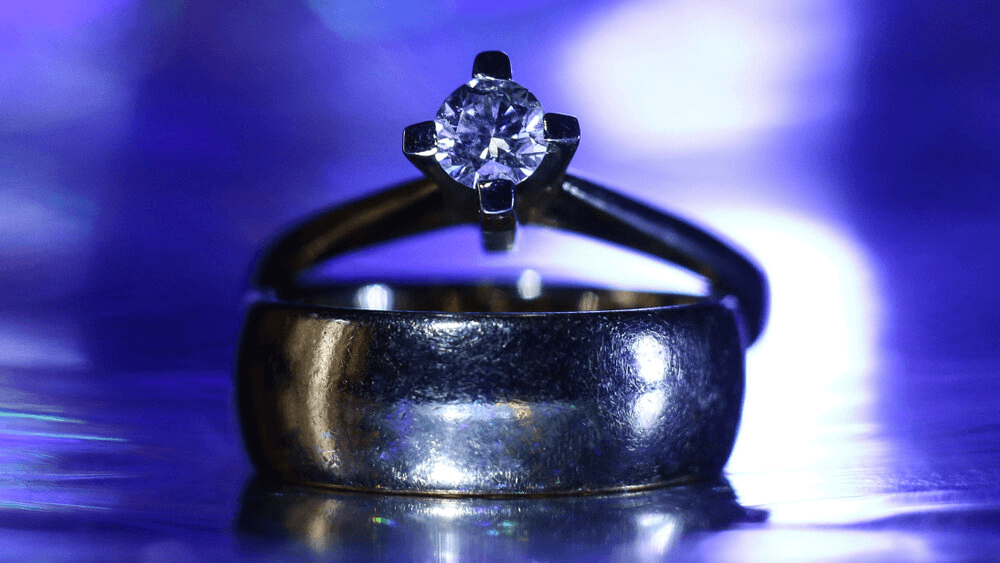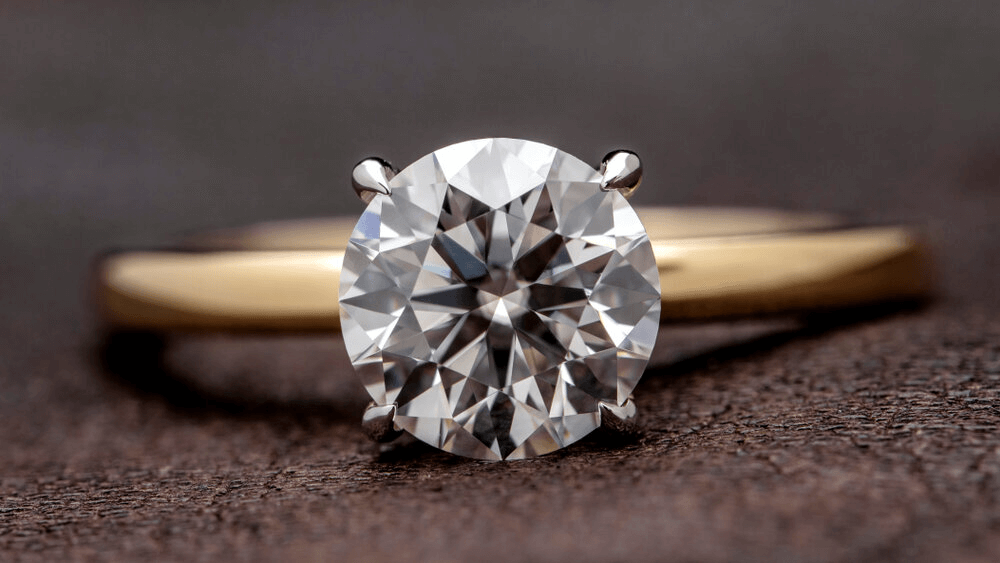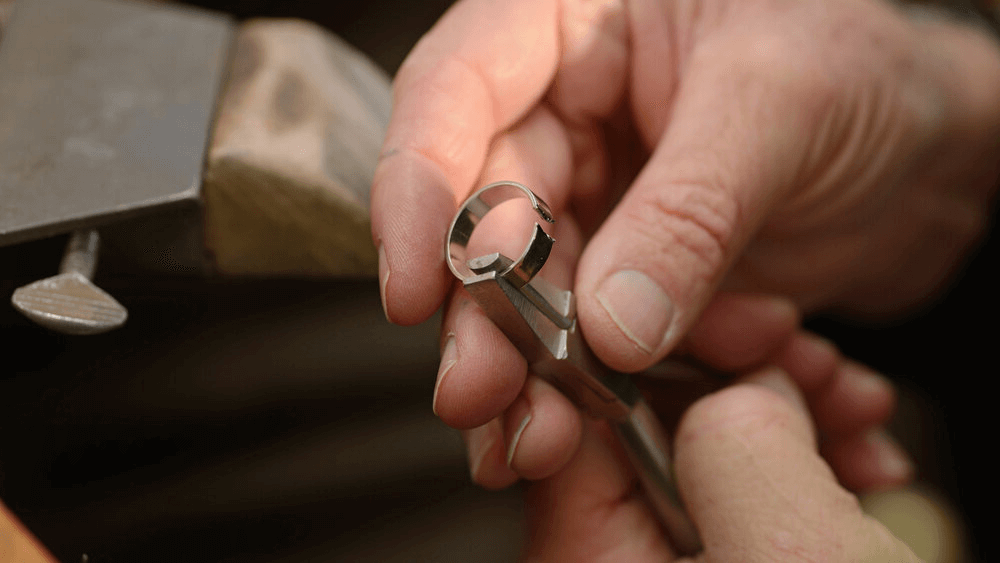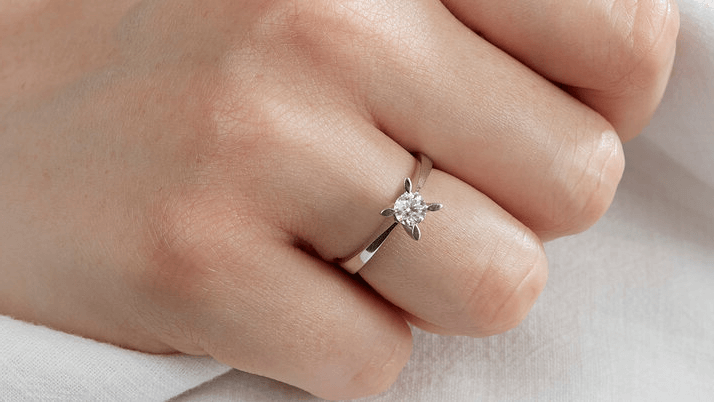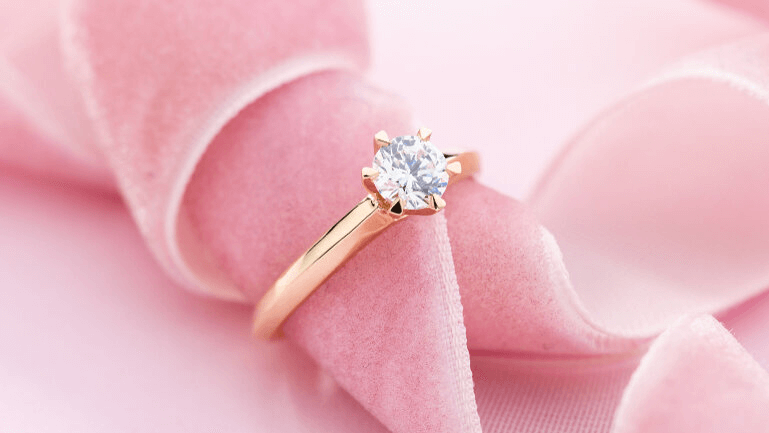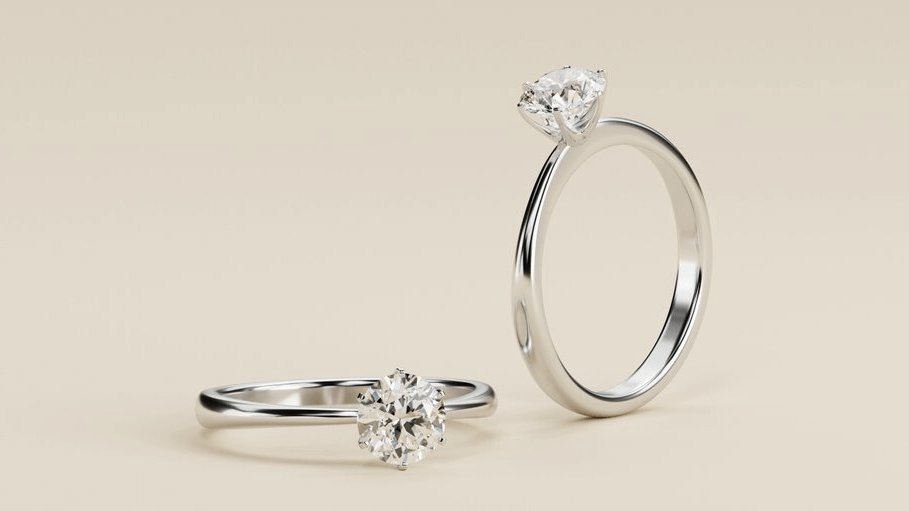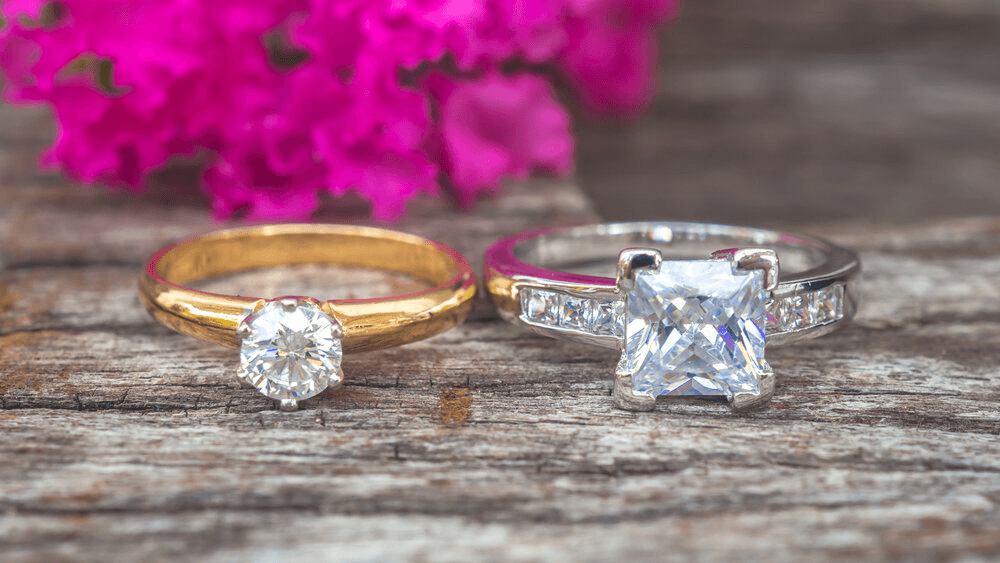Gold Wars: 10K vs 14K Engagement Rings!

By Gary A.

Edited by Olivia H.
Published Dec 24, 2021
Edited on Mar 31, 2025
When deciding between 10K vs 14K gold, understanding the balance between durability and gold content is key to choosing the perfect engagement ring that fits both your style and lifestyle.

Navigate this guide:
- 6 Quick Tips for Focusing on Gold Quality (10K vs 14K)
- Introduction to Gold in Jewelry
- Understanding Gold Purity and Its Significance
- Comparing 10K and 14K Gold: A Detailed Analysis
- Budget Considerations
- Choosing the Right Karat Type for White Gold
- Our Expert Take
- 10 FAQs
Before we dive deeper into the specifics, here are some practical tips to help guide your decision-making process:
6 Quick Tips for Focusing on Gold Quality (10K vs 14K)
When purchasing a diamond engagement ring, the gold quality is as crucial as the diamond itself. Here are some practical tips to keep in mind, especially when differentiating between 10K and 14K gold:
- Tip 1:Understanding Gold Purity and Durability 10K Gold: Recognize that 10K gold, with its 41.7% gold content, is more durable due to a higher concentration of alloy metals. It’s less likely to get dented or scratched, making it suitable for rings that will be worn daily. 14K Gold: With 58.3% gold, 14K offers a balance between durability and a richer gold appearance. It’s less hard than 10K but provides a better gold color and purity, making it a popular choice for engagement rings.
- Tip 2:Analyzing Color and Aesthetic Appeal Color Depth: 14K gold typically has a deeper, more vibrant yellow tone compared to 10K gold. Consider the visual appeal and how the color complements the diamond. Consistency: Examine the consistency of the color. A uniform and consistent hue across the ring is a sign of good quality in both 10K and 14K gold.
- Tip 3:Examining Gold Hallmarks: Check for hallmarks or stamps inside the ring band. “10K” or “417” indicates 10K gold, while “14K” or “585” signifies 14K gold. These markings are a testament to the gold’s purity and authenticity.
- Tip 4:Consider the Ring’s Design and Style Complex Designs: For intricate designs with more delicate features, 14K gold might be a better option due to its relatively softer nature, which allows for more detailed craftsmanship. Simple, Sturdy Designs: If the ring design is simple and requires more strength (especially for daily wear), 10K gold could be more appropriate.
- Tip 5:Assessing Long-term Wear and Maintenance 10K Gold Maintenance: Due to its higher alloy content, 10K gold may tarnish over time but is easier to maintain and buff out scratches. 14K Gold Care: 14K gold requires slightly more care to maintain its luster but generally holds its appearance better over time.
- Tip 6:Matching Gold Type with Lifestyle and Skin Sensitivity Active Lifestyle: If the wearer has an active lifestyle or works with their hands, 10K gold’s durability becomes a significant advantage. Skin Sensitivity: For individuals with sensitive skin, 14K gold is often a safer choice as it has less alloy content that can potentially cause skin irritation.
Now that you’ve got these practical tips, use Jeweler AI below to find the perfect engagement ring that suits your style and budget:
Introduction to Gold in Jewelry
For anyone investing in gold for their engagement ring or wedding bands. weighing up the options is a little more complicated than it is for those who have elected to use platinum, or even palladium.
Why? Because you cannot purchase a piece of solid gold jewelry without considering its karat type – a particular measure of purity used to convey how much gold is present within the piece in question.
One of the most common karat types for engagement rings and wedding bands is 14, but many shoppers are interested to know about the benefits of saving a little extra money on 10K gold instead.
As always, there are advantages and disadvantages to both options – although settling on the karat type that’s right for you might not be as difficult as it sounds right now…
Understanding Gold Purity and Its Significance
14K gold features a much higher level of purity than 10K gold.
Gold jewelry is almost never pure gold. This has nothing to do with cost or rarity, however, and everything to do with durability.
A piece of pure gold jewelry, while beautiful in color and shine, will prove unwearable on a daily basis – or even a semi-regular basis. It’s soft, prone to scratching, bending, denting, and warping, and easily ruined after just a couple of wears. Given the incredibly high value of pure gold, it’s understandable why it’s such a rare sight in the jewelry world.
This is why gold is alloyed (or combined with other, stronger metals) before making its way to the jeweler’s work table. Your existing gold jewelry will have a purity level below 100% — or, more accurately, 24 karats.
Why? Because jewelry is represented in 24 parts, meaning that pure gold would represent 24/24 of those parts.
14 karats can be represented in the fraction 14/24 (14 parts gold out of a total 24 parts, with 10 parts alloy making up the difference).
The Essence of 10K Gold
Similarly, 10 karats can be represented in the fraction 10/24, with 10 parts of gold to 14 parts alloy. Interestingly, until 2018, 10 karats represented the lowest karat type that was permitted to be called ‘gold’ within the US.
This is the key difference between the two – that 14 karat gold rings feature more gold than 10 karat gold rings of the same size – but that fact alone doesn’t help you pick out jewelry. More importantly, it has ramifications for the look, strength, and cost of your chosen jewelry.
Here’s what you need to know…
Comparing 10K and 14K Gold: A Detailed Analysis
The first thing on anyone’s mind – even before their eyes wander over to the price tag – is what their ideal ring will look like. Karat type has a pretty significant impact on appearance, and shoppers will know pretty quickly which one they prefer.
Composition and Durability
As a result of the higher quantity of alloy, 10K features even more strength than 14K – although both are considered strong enough to be worn on an everyday basis.
Just as the color of gold is significantly diluted in 10K pieces, so too are its other properties. Gold’s pliability and lack of resilience to bending and breaking are as good as gone when you reach the level of 10K, making it by far the most robust and sturdy choice for jewelry that will be worn day in, day out, for the rest of your life.
There is a key consideration here, however: how much difference will you detect between a 10K gold ring and a 14K gold ring, in terms of durability alone?
In all likelihood, none at all. 10K, 14K and 18K are all considered to be sturdy enough to be used for engagement rings (including holding that diamond in place) and wedding bands. Sure, 18K is the softest of the three, but it’s not going to feel anything like pliable and flexible pure gold.
18K and 14K will both scratch more easily than 10K. but 14K is considered by most to represent the best ‘middle ground’ between strength and appearance.
Making gold as strong as possible means sacrificing its distinctive color; keeping gold as vivid as possible means sacrificing its ability to be worn more than a couple of times before it sustains noticeable damage. Making gold as strong as it needs to be without losing any more color than necessary yields 18K and 14K gold; two solid choices for anyone who prefers finding a sweet spot over making a major compromise.
Color Differences and Aesthetic Appeal
The difference is clearly noticeable – particularly when the two metals are compared directly side-by-side. 14K features a more vivid, brighter yellow hue, while 10K gold is paler – a calmer shade of yellow that is lacking the richness and depth of the higher karat types.
One of the main reasons why 14K gold is so popular is because of the fact that it’s still more gold than alloy. At just over 58% purity, 14 karat gold retains much, much more of the warmth and vividity of pure gold than 10 karat gold, which stands at just under 42% purity.
It may sound like we’re tipping the scales in favor of 14K gold, but the truth is that there is no right or wrong answer to the question, ‘Which is more beautiful?’
True, the majority of shoppers are likely to favor the look of 14K gold, simply because of the fact that it looks ‘more golden’ than its 10K equivalent. Nevertheless, some will prefer the more muted tones of 10K gold.
Are you going to be able to instantly identify the karat type of your cashier’s wedding band, on sight, after reading this article? Probably not – unless, of course, it turns out to be a lucky guess. But, when you look at a 10 karat and 14 karat band side by side, we’re pretty confident you’d be able to identify them without much difficulty.
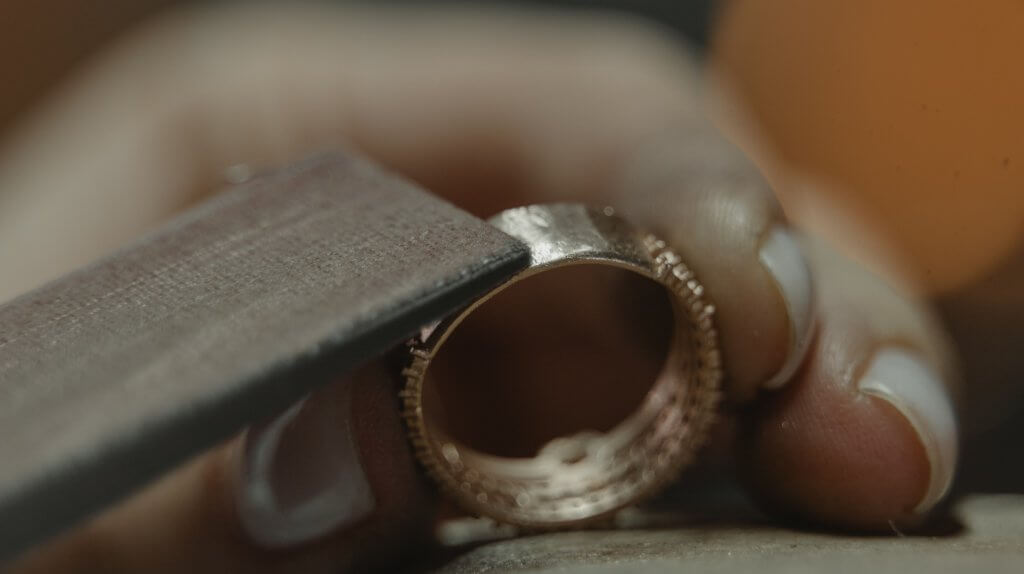
Budget Considerations
The other half of the story. Gold is infamously expensive and, while the amounts used within engagement ring settings are generally pretty small, there is a pretty substantial price difference between each karat type.
The Cost of 10K Gold vs 14K Gold
14K is significantly more valuable than 10K since it contains more gold.
While all metals – including the common alloys found in gold jewelry – have their own value, gold is the star of the show when it comes to value, and you can expect to pay significantly more to step over the threshold separating 10K from 14K.
In a 7g solid gold wedding band, for instance, the price difference between the gold required to make a 10K ring and a 14K ring could be around 35%. This is, of course, for the gold alone – and not the jeweler’s time required to design and create the ring.
It might sound like a dramatic increase given the proximity between 10K and 14K, but it’s one that most shoppers consider a necessity since the two are separated by a key concern: the fact that one (14K) refers to rings featuring more gold than alloy, and the other (10K) refers to rings featuring more alloy than actual gold.
Choosing the Right Karat Type for White Gold
When choosing between 10K and 14K white gold, it’s essential to consider factors beyond the gold content itself. White gold is particularly valued for its sleek, silvery appearance, which comes from being plated with rhodium. This rhodium finish means the gold’s underlying color isn’t as significant as it is with yellow or rose gold.
10K White Gold:
For shoppers focused on durability, 10K white gold may be the better choice due to its higher alloy content, which makes it more resistant to dents and scratches. This makes it ideal for people with an active lifestyle or who prefer lower-maintenance jewelry.
14K White Gold:
On the other hand, 14K white gold is more popular with those who prioritize the prestige and value associated with higher gold content. It offers a balance between durability and a richer gold composition, making it a great choice for those who want a slightly purer gold option without sacrificing too much strength.
Consider Maintenance:
Regardless of the karat, both 10K and 14K white gold will require occasional maintenance to preserve the rhodium plating. Over time, the plating may wear off and need reapplication to maintain the white, reflective finish. This is a key factor to keep in mind when choosing white gold for an engagement ring.
Our Expert Take
Each holds their own value for the jewelry world but, for the most part, we would consider 14 karat gold to be the better choice for anyone looking to create a beautiful gold engagement ring or wedding band.
Durability is essential, and we would never recommend that shoppers sacrifice strength for aesthetics – particularly when there’s a valuable diamond at stake. That’s why we’d never suggest shoppers focus their sights higher than 18K.
There is, however, a big difference between the high expense and lower durability of 18K gold, and what is widely regarded as an inferior color of 10K gold – and that difference is accounted for excellently within 14K gold.
There’s a lot more to the 14K vs 18k gold debate than that, of course, but so far as we’re concerned 14K always comes out on top if you find yourself on the fence between 14 and 10 karats.
14K creates a stunning contrast between the warmth of the metal and the glassy clarity of a diamond – not to mention those flashes of brilliance and fire. For many people, it looks like the more expensive choice thanks to its richer, deeper hue and warm shine, and lives up to our expectations of what solid gold jewelry ought to look like.
10 FAQs
- Q: What is the main difference between 10K and 14K gold?
- A: 10K gold contains 41.7% gold and is more durable due to a higher percentage of alloy metals. 14K gold, on the other hand, has 58.3% gold content, offering a better balance of purity and durability.
- Q: Does 10K gold look different from 14K gold?
- A: Yes, 14K gold typically has a richer, deeper yellow color compared to 10K gold, which appears slightly paler due to its higher alloy content.
- Q: Is 10K gold more durable than 14K gold?
- A: Yes, 10K gold is more durable and resistant to scratches and dents because it has a higher proportion of alloy metals.
- Q: Can people with sensitive skin wear 10K gold?
- A: People with sensitive skin might prefer 14K gold as it’s less likely to cause allergic reactions due to its higher gold content.
- Q: Which is better for an engagement ring, 10K or 14K gold?
- A: It depends on individual preference and lifestyle. 14K gold is generally preferred for its ideal balance of durability and richer gold appearance.
- Q: Will 10K gold tarnish over time?
- A: While all gold can tarnish over time, 10K gold is more susceptible due to its higher percentage of alloy metals. Regular cleaning and maintenance can minimize tarnishing.
- Q: Is 14K gold significantly more expensive than 10K gold?
- A:14K gold is more expensive than 10K gold due to its higher gold content, but the price difference can vary depending on other factors like design and craftsmanship.
- Q: How can I tell if my ring is 10K or 14K gold?
- A: Check for a hallmark inside the ring. “10K” or “417” indicates 10K gold, while “14K” or “585” signifies 14K gold.
- Q: Are there color variations in 10K and 14K gold?
- A: Both 10K and 14K gold can come in various colors like yellow, white, and rose gold. The color is achieved by mixing gold with different alloy metals.
- Q: How should I care for my 10K or 14K gold engagement ring?
- A: Regular cleaning with mild soap and water, and avoiding exposure to harsh chemicals can keep your gold engagement ring in good condition. It’s also recommended to have it professionally cleaned and inspected periodically.
Discover your ideal gold with Jeweler AI – the smart way to choose between 10K and 14K.
FOLLOW-UP GUIDE SERIES

